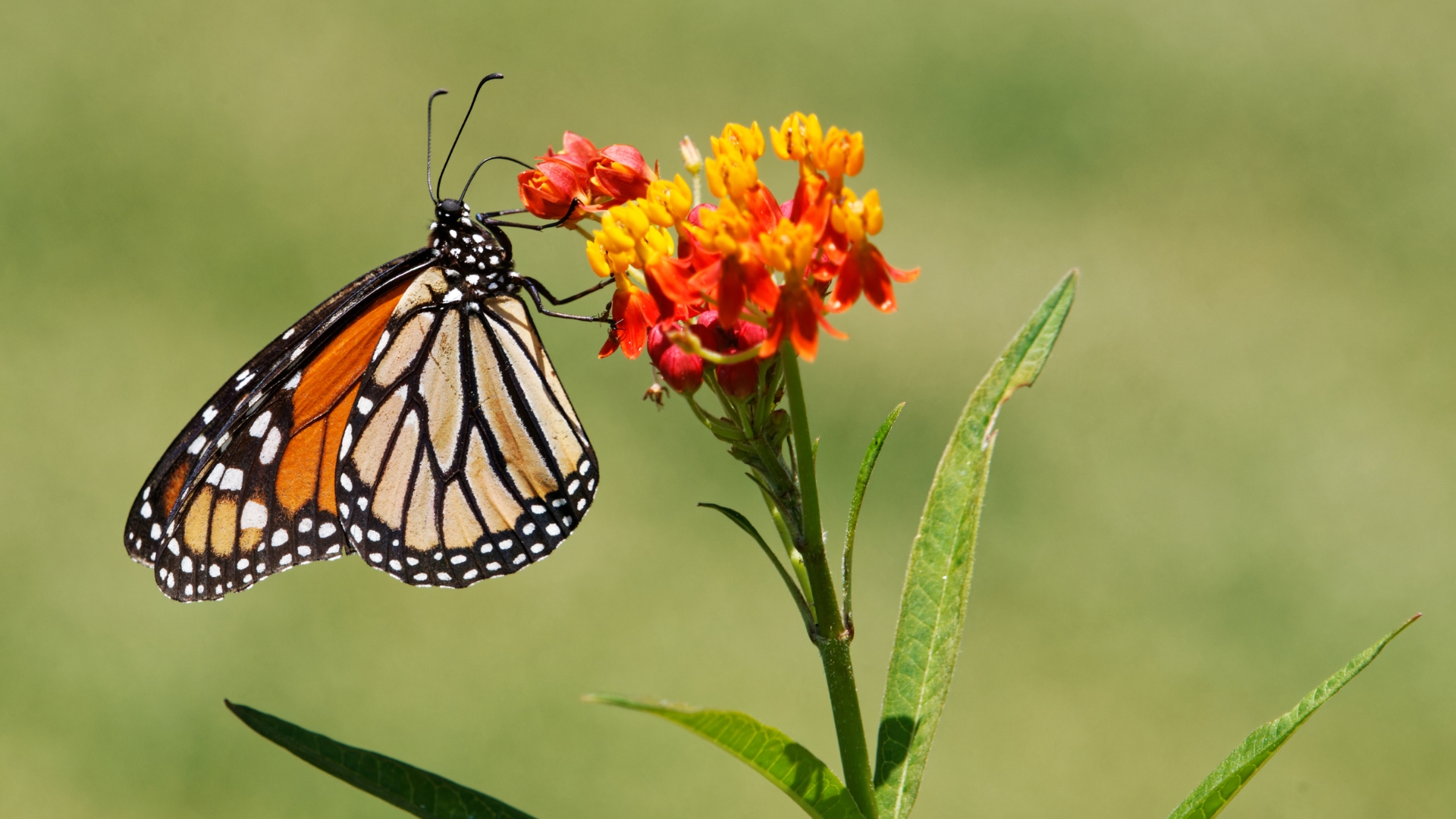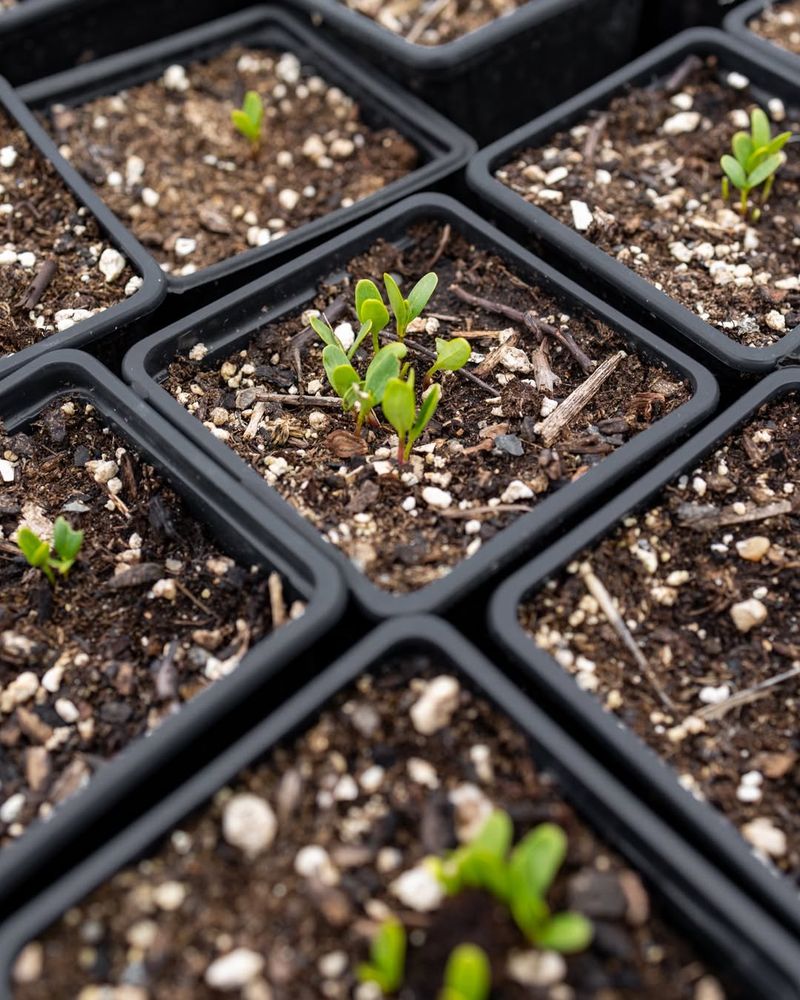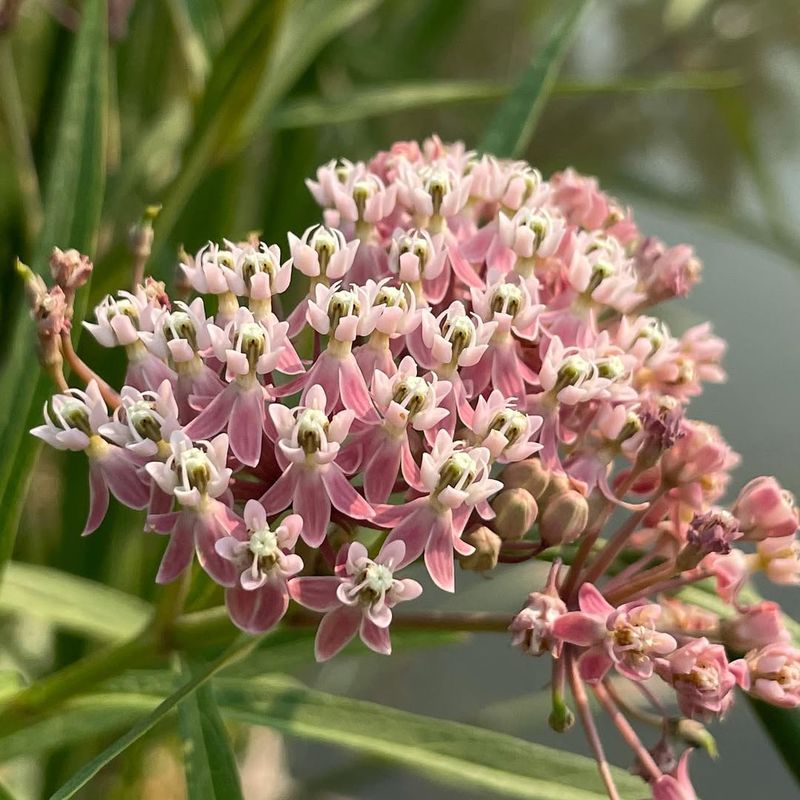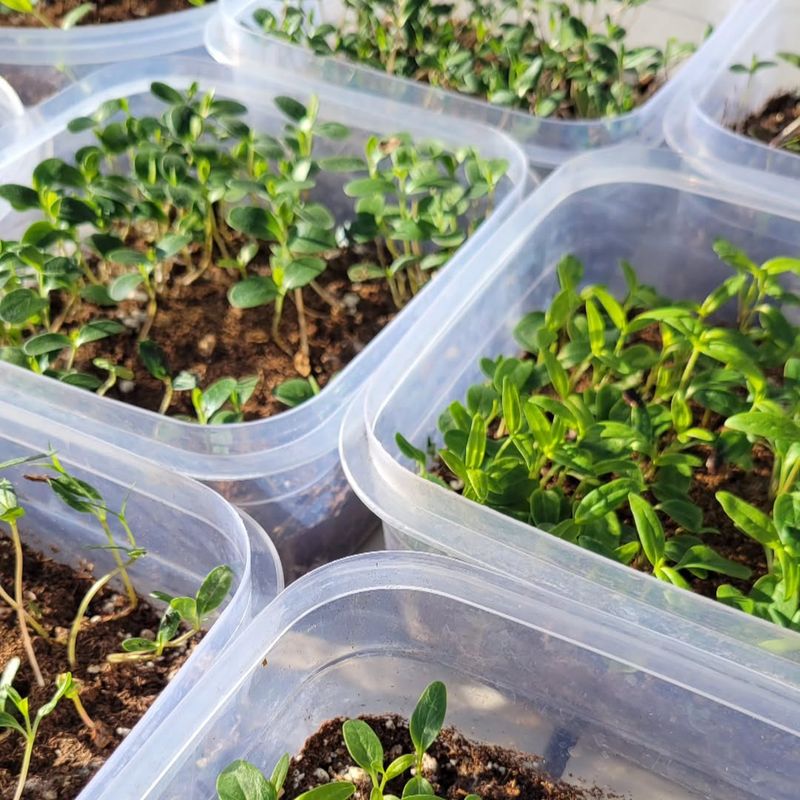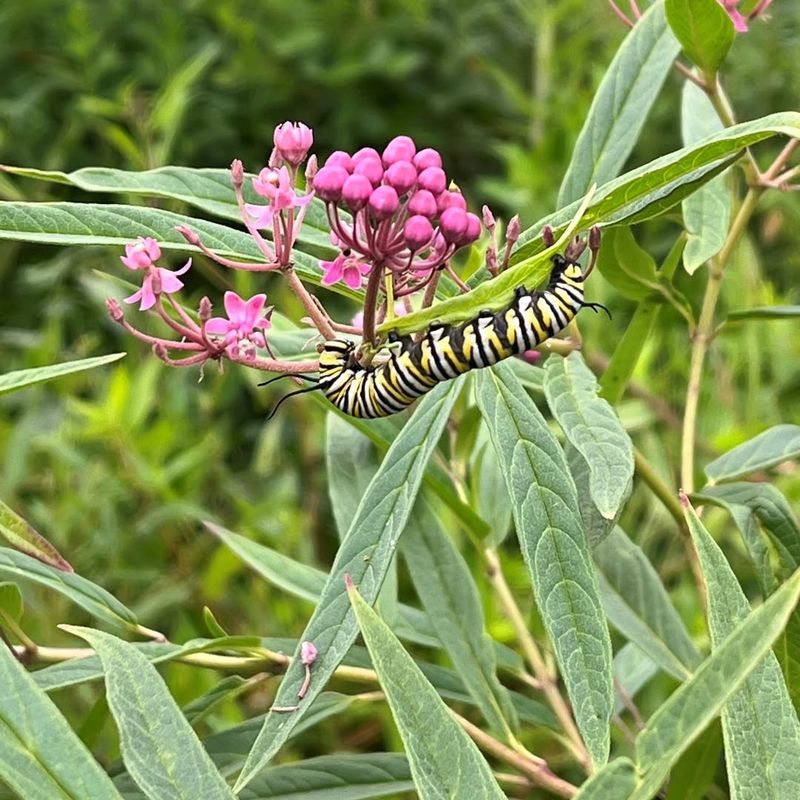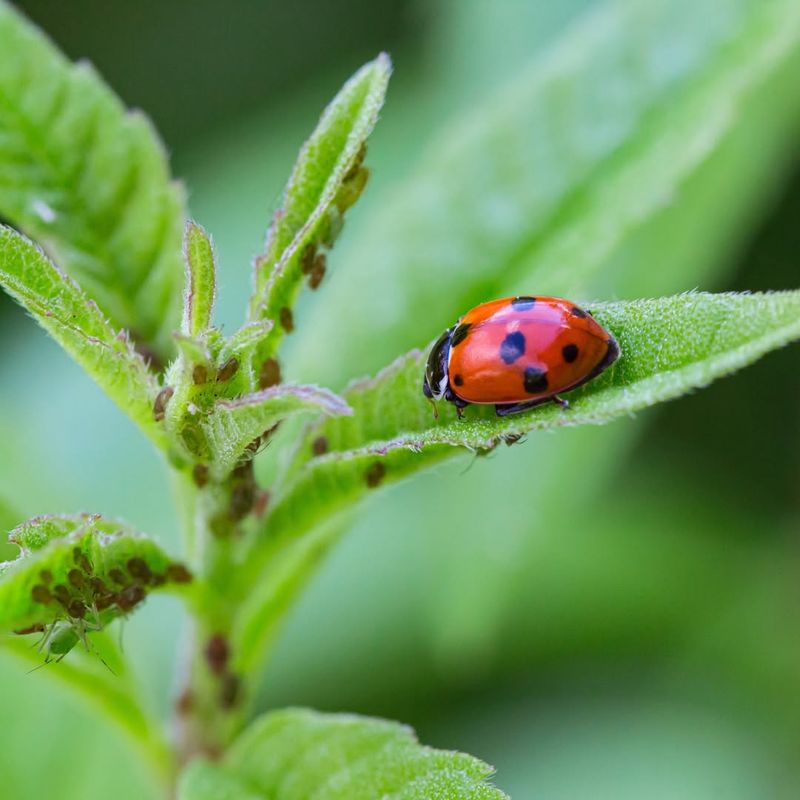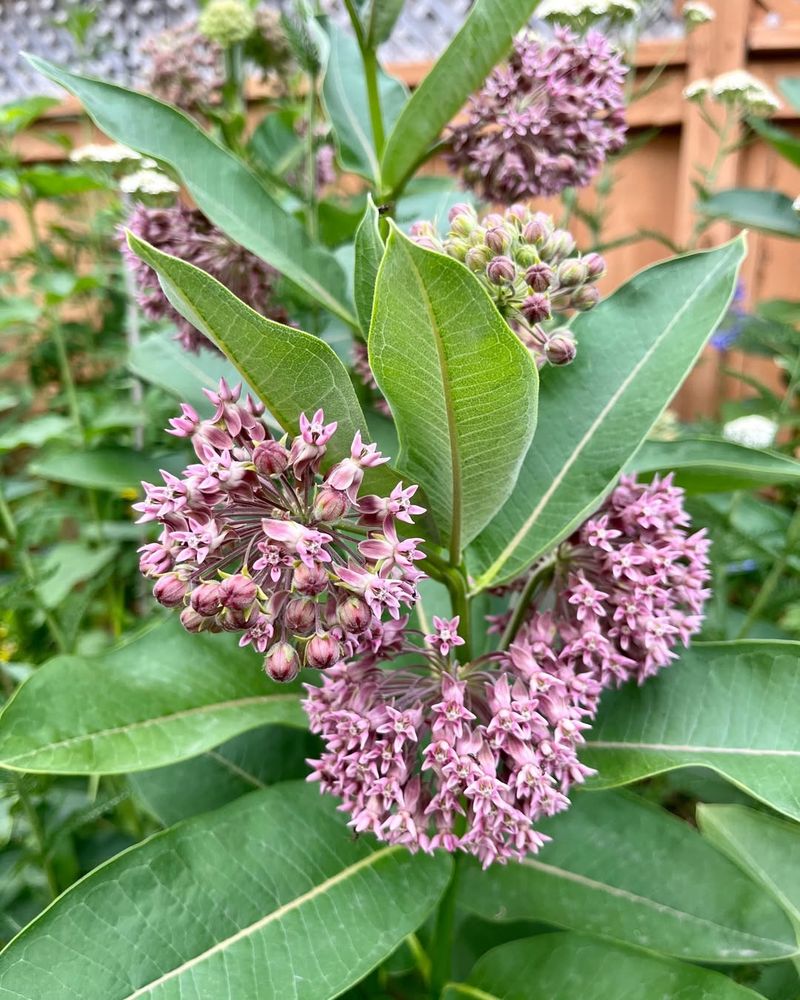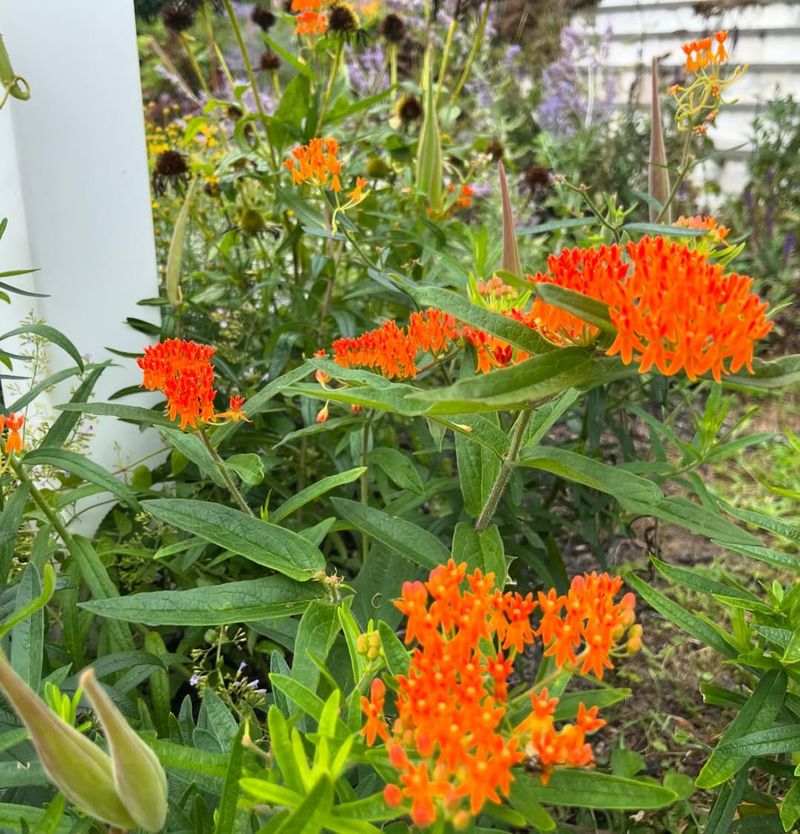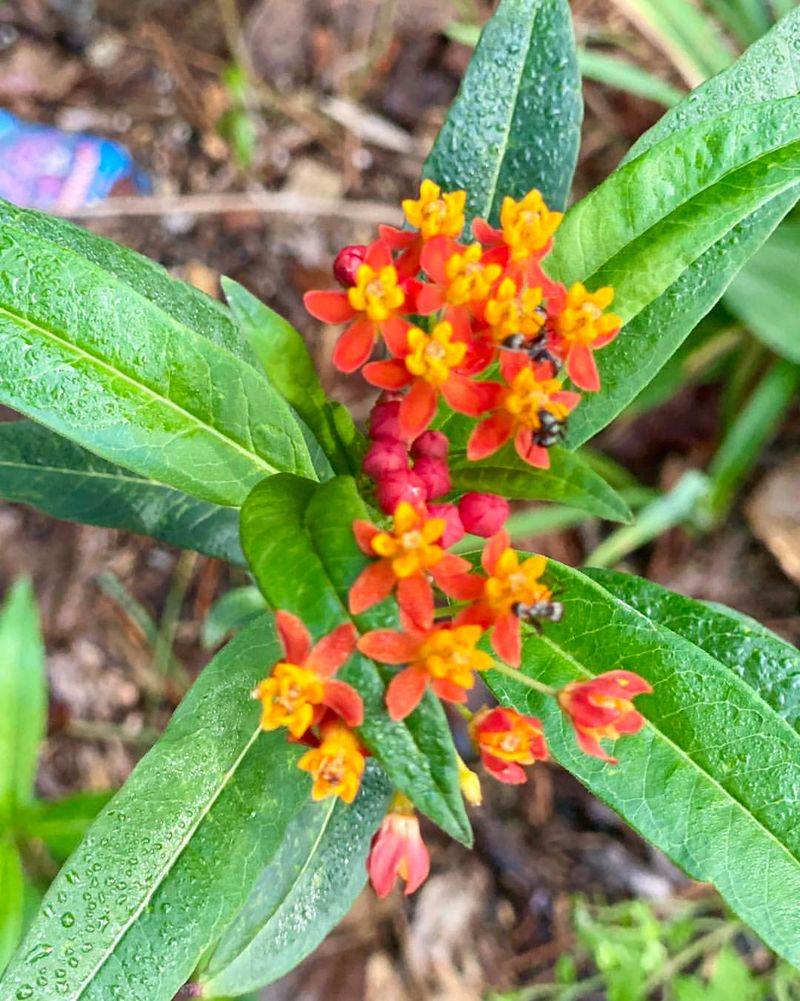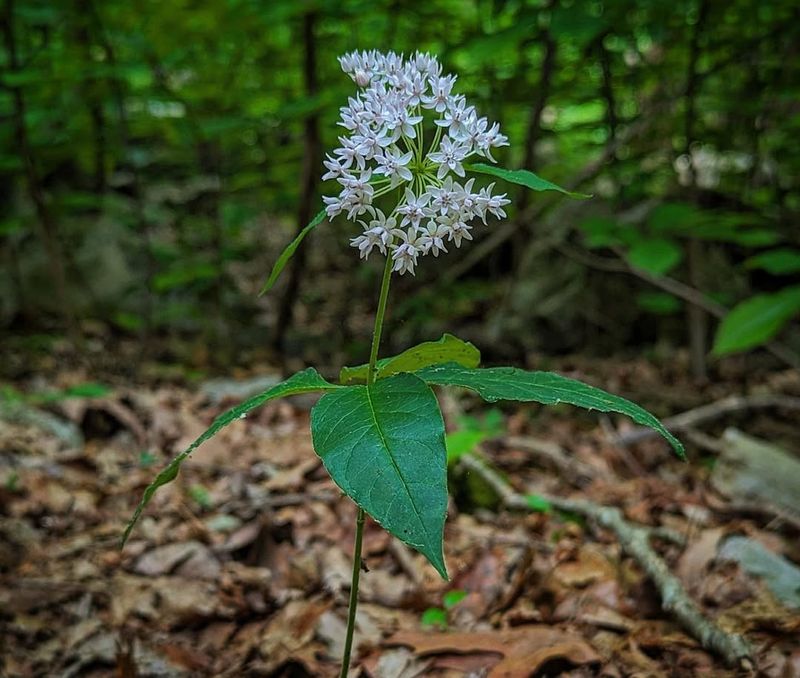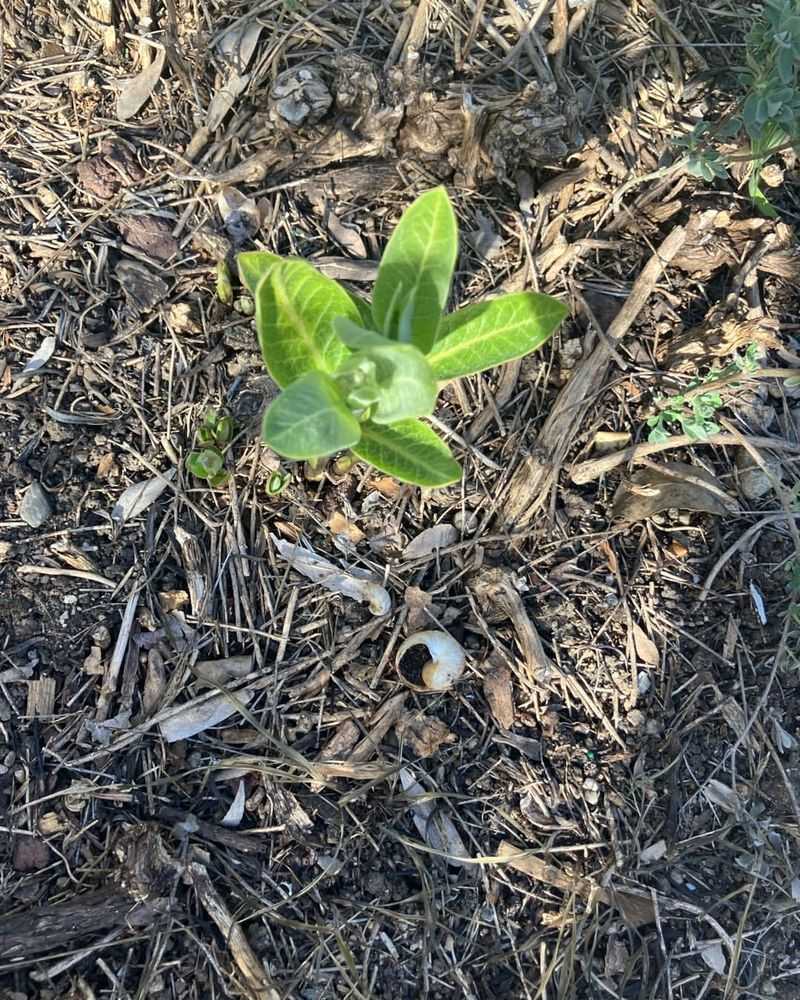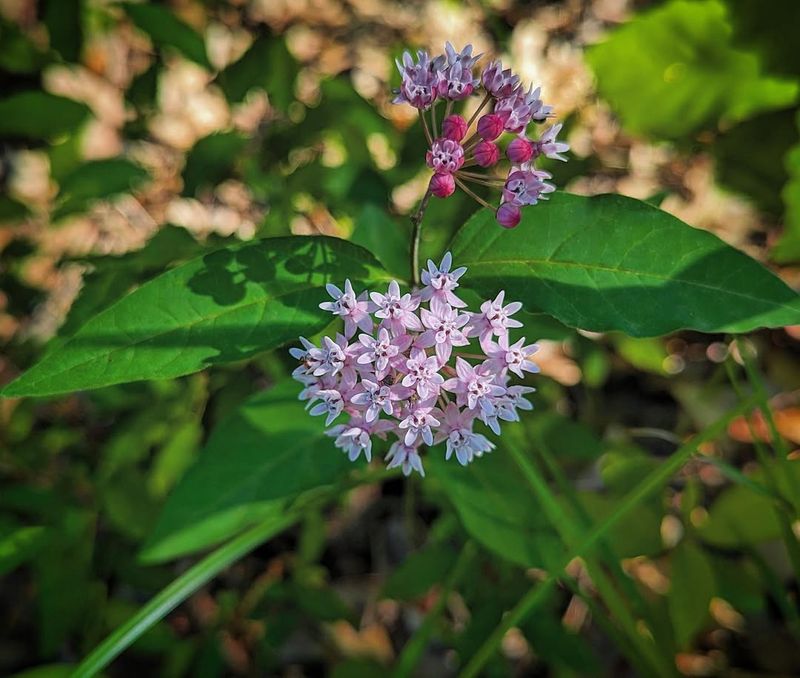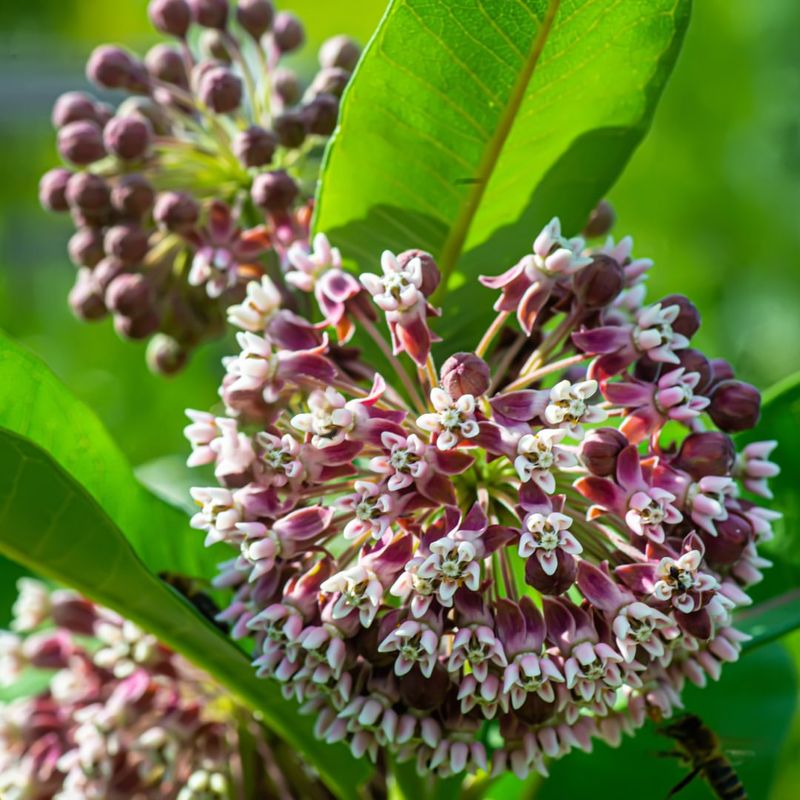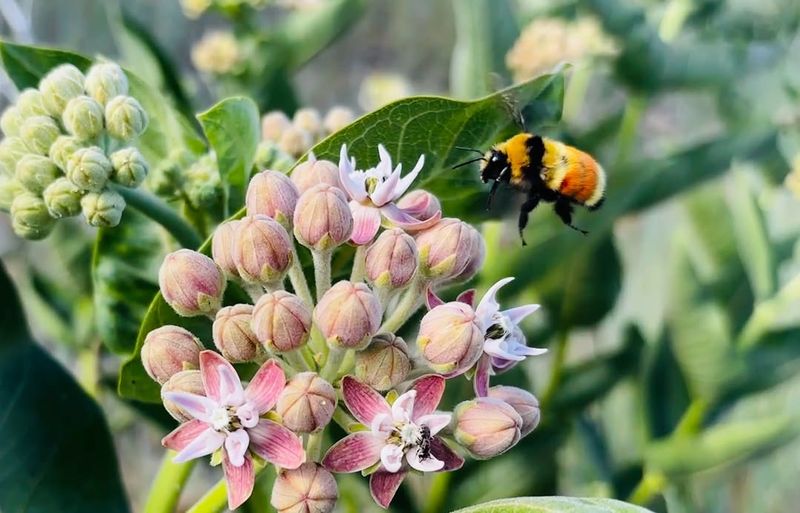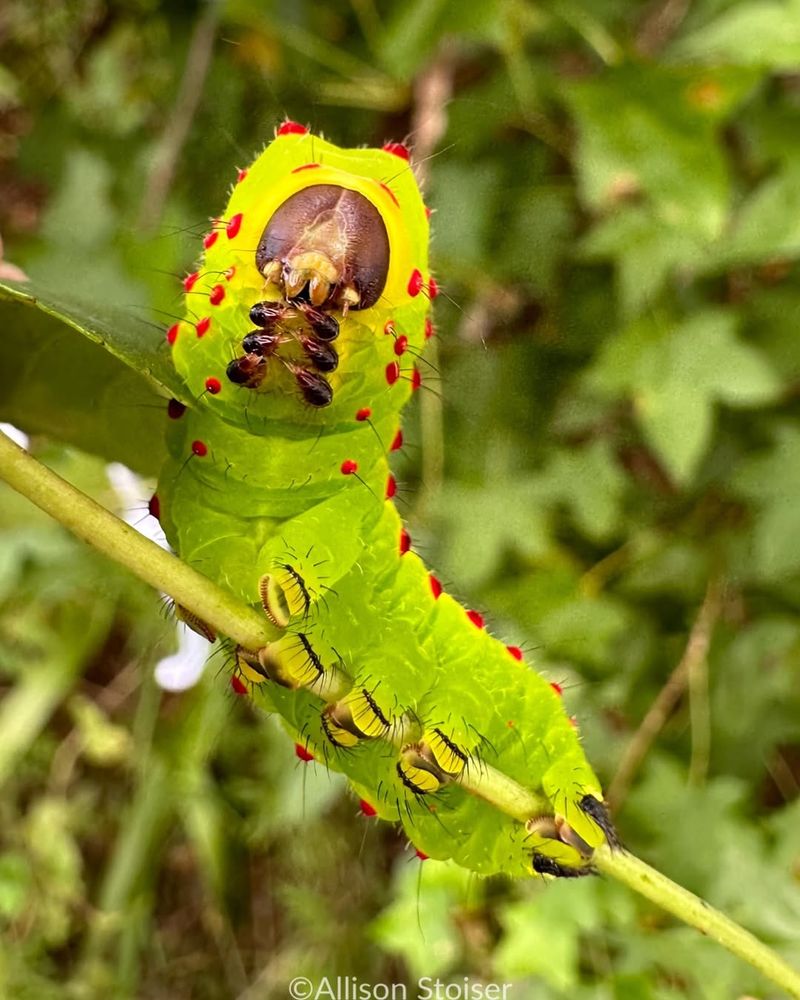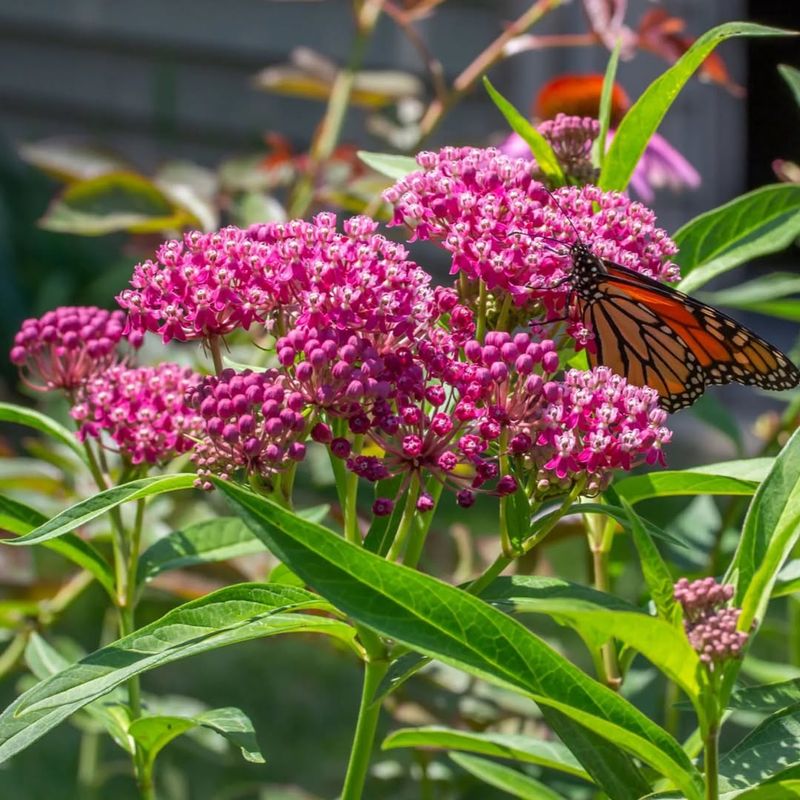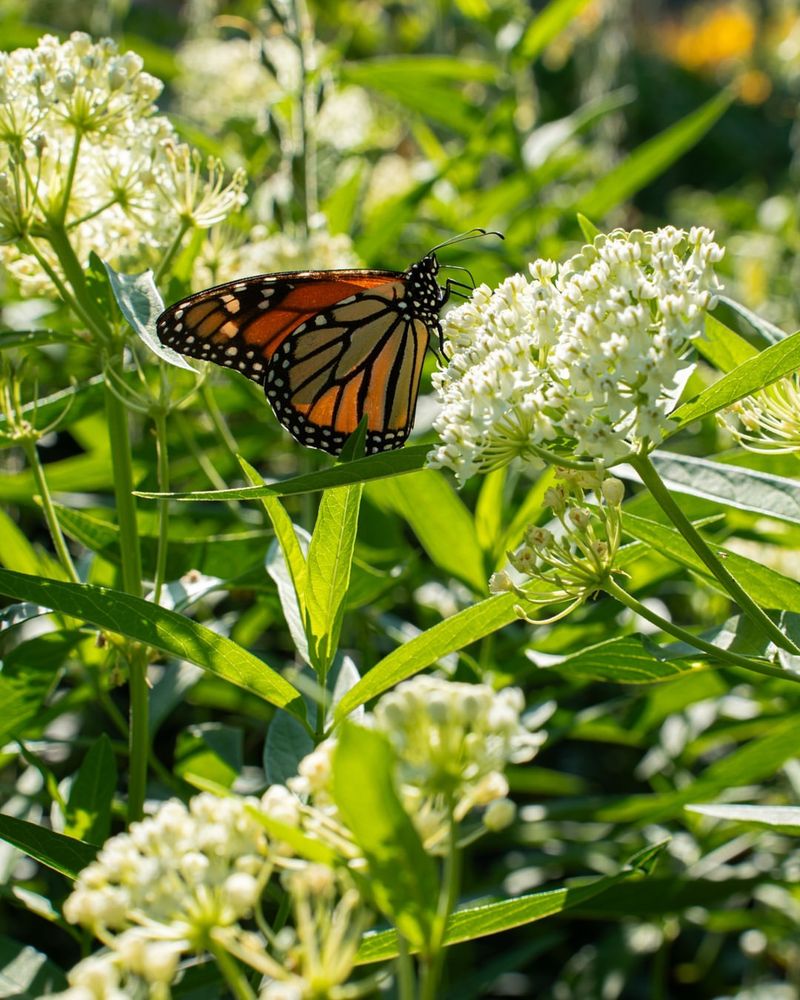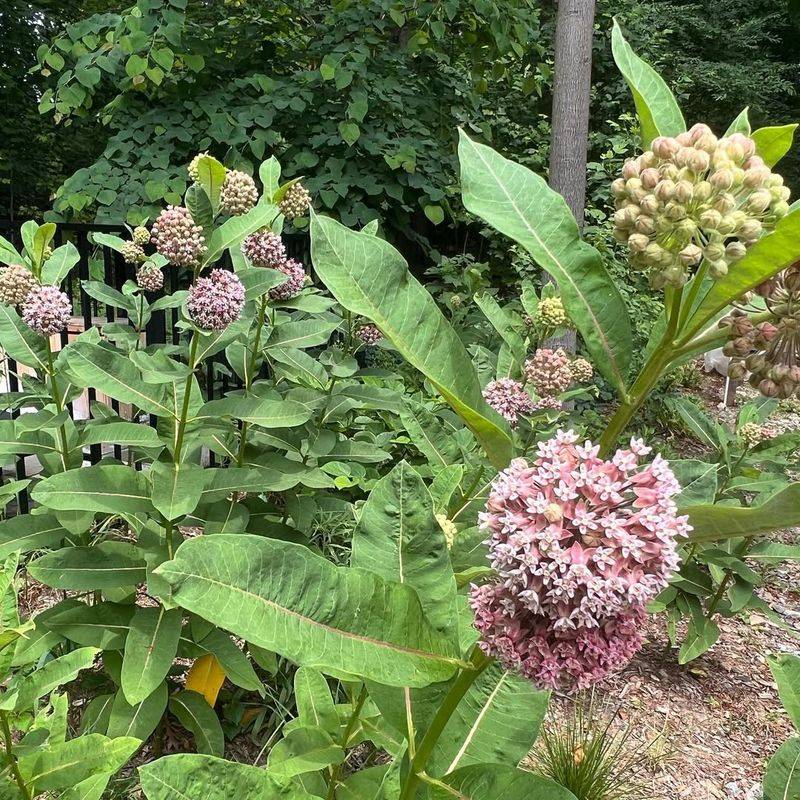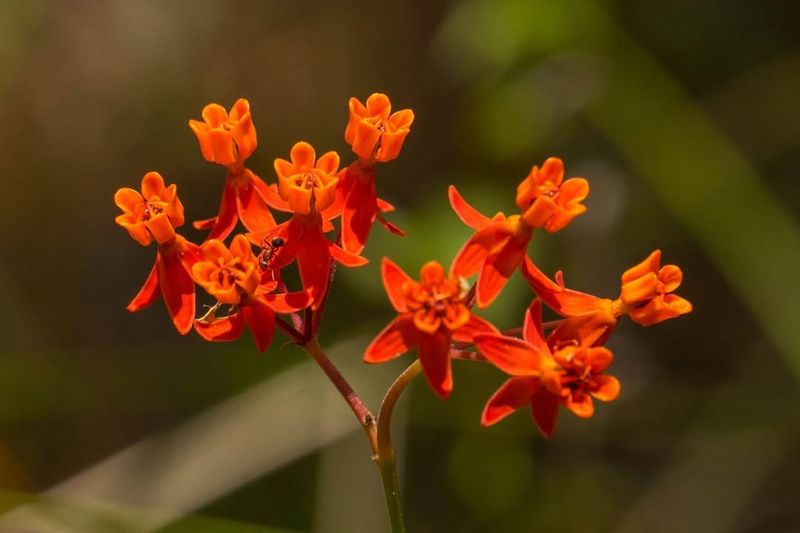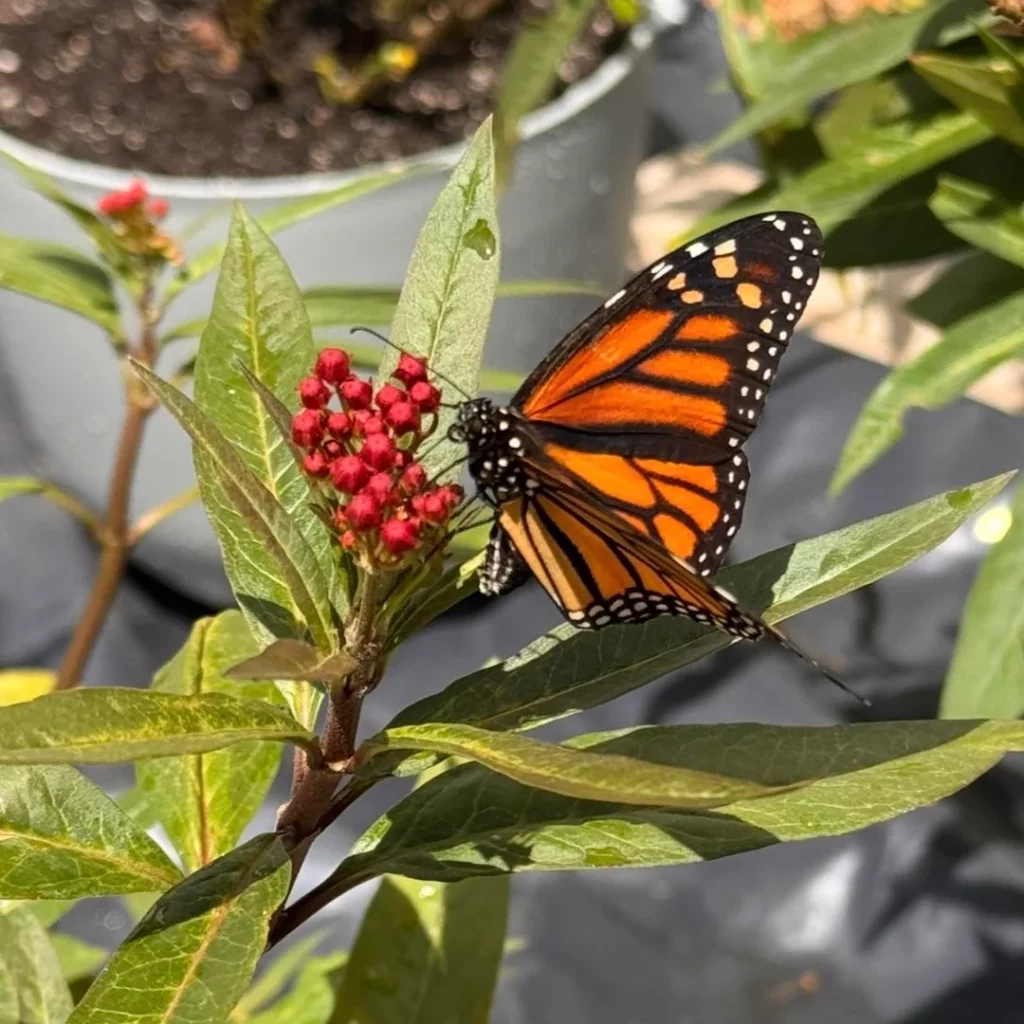Milkweed feels like a superhero plant for monarchs, but growing it well takes a bit more than just planting and hoping for the best.
I learned that there are some surprising things about milkweed that can make all the difference for attracting those beautiful butterflies and keeping them safe.
From soil quirks to timing and even how to handle pests, these details helped me create a welcoming home for monarchs year after year. If you’re looking to support these amazing travelers, knowing these insider tips will make your milkweed patch thrive.
Here’s what I wish I’d known from the start.
1. Soil Preferences
Gardening brings unexpected delights, particularly when it involves accommodating specific conditions. Milkweed thrives best in well-drained soil, which ensures robust plant health. Compacted or overly moist soil should be avoided since it can lead to root rot.
Healthy soil contributes to the plant’s resilience, making it less susceptible to diseases. Amending the soil with organic matter can also provide the necessary nutrients for optimal growth. Pay attention to soil texture to ensure your milkweed thrives and attracts monarchs.
2. Sunlight Requirements
The quest for optimal growing conditions isn’t always straightforward. For milkweed, full sunlight exposure is crucial. It needs at least six hours of direct sun daily to flourish.
In shaded areas, growth can be stunted, leading to fewer blooms and a less inviting habitat for monarchs. Position your milkweed in a sunny location where it can bask in the light, ensuring a vibrant and productive growth cycle. This simple step can significantly impact both growth and butterfly attraction.
3. Watering Needs
Watering correctly is often the linchpin to successful cultivation. Milkweed requires a balance; it should be watered deeply but infrequently. Overwatering can suffocate the roots, while underwatering might stress the plant.
Let the top inch of soil dry out between waterings to provide an optimal growing environment. This technique helps in maintaining healthy roots and ensures the plant is robust enough to support visiting monarchs. Adjust your watering schedule according to seasonal changes for best results.
4. Seed Germination
The hidden potential within seeds is remarkable. Milkweed seeds need cold stratification to germinate effectively. Place them in the refrigerator for several weeks to mimic winter conditions. This process breaks dormancy, encouraging strong growth once planted.
Proper seed preparation can yield a healthy crop of plants, each ready to host monarch caterpillars. Handle seeds with care to avoid damaging them during planting. With a little patience, you’ll soon see the results of your efforts.
5. Wildlife Interactions
A harmonious garden invites various guests. Milkweed not only attracts monarchs but also serves as a habitat for other beneficial insects and pollinators. However, some creatures may munch on leaves, so monitor plant health regularly.
a diverse ecosystem can enhance plant growth and resilience. By fostering these interactions, you create a thriving environment that supports monarchs and other wildlife. Balance is key to maintaining a healthy and inviting garden.
6. Pest Control
Nature often finds its balance, but sometimes a little assistance is needed. Aphids can be a common nuisance on milkweed. Introducing natural predators like ladybugs can help keep these pests in check.
Alternatively, using a gentle spray of soapy water can deter aphids without harming beneficial insects. Avoid harsh chemicals, as they may negatively affect monarchs. Implementing these strategies ensures your plants remain healthy and monarch-friendly.
7. Pruning Practices
Managing plant growth requires strategic intervention. Pruning milkweed encourages bushier growth and prevents it from becoming too leggy. Trim plants back in early spring to promote new shoots. Regular pruning also helps in removing any diseased or damaged parts, enhancing overall vitality.
Keep tools clean to prevent the spread of diseases. Thoughtful pruning supports robust growth and a more inviting habitat for monarchs.
8. Companion Planting
The interplay between plants can be fascinating. Pairing milkweed with other native plants benefits growth and attracts more pollinators. Wildflowers like coneflowers and black-eyed Susans are excellent companions.
These plants not only complement visually but also enhance the ecosystem, providing varied resources for monarchs. Thoughtful companion planting can lead to a healthier and more beautiful garden. Choose plants that share similar growing conditions for the best results.
9. Avoiding Invasive Species
Guarding against intruders is vital for a healthy garden. Some milkweed species can become invasive, spreading aggressively. Regular monitoring and maintenance are essential to keep them in check. Remove unwanted seedlings promptly to prevent them from overtaking the garden.
Awareness and timely action help maintain a balanced planting area. Choose native species that are less likely to disrupt your ecosystem, ensuring a hospitable environment for monarchs.
10. Fertilization Guidelines
Boosting growth with the right nutrients can make a difference. Milkweed generally requires minimal fertilization. However, if the soil is poor, a slow-release organic fertilizer can be beneficial.
Avoid over-fertilizing, as excessive nutrients can lead to weak growth and fewer flowers. A balanced approach ensures robust plants that attract monarchs. Apply fertilizer sparingly and according to the specific needs of your soil and plants.
11. Preventing Disease
Vigilance can ward off unwanted problems. Milkweed is susceptible to certain fungal diseases, such as mildew. Ensuring good air circulation and avoiding overhead watering can prevent these issues. Remove any diseased leaves promptly to stop the spread.
Keeping the garden tidy and debris-free also reduces the risk of infection. Regular monitoring and prompt action help maintain plant health and sustain a welcoming environment for monarchs.
12. Winter Care
The changing seasons require adaptation. In colder climates, milkweed benefits from winter protection. Mulching around the base insulates roots against harsh temperatures. During this dormant period, refrain from cutting back dead stems until spring.
These provide habitats for beneficial insects. Consider local climate conditions and adjust care routines accordingly to ensure plants survive winter and thrive come spring.
13. Propagation Techniques
Expanding your garden can be a rewarding endeavor. Propagating milkweed through seeds or cuttings can replenish and extend your garden’s reach. Cuttings taken in spring can be rooted successfully in controlled conditions.
This method allows for faster establishment than starting from seed. By understanding propagation techniques, you can effectively increase your milkweed stock, providing ample habitat for monarchs.
14. Understanding Growth Stages
Observing growth is a lesson in patience. Milkweed transitions through distinct stages from seedling to maturity, each with specific needs. Understanding these phases helps in providing appropriate care, whether it’s supporting seedlings or managing mature plants.
Attentive care at each stage ensures healthy development and a thriving environment for monarchs. Tailoring your approach according to growth stages can lead to successful cultivation.
15. Geographical Considerations
Location influences success more than one might think. Milkweed species vary in their adaptability to different climates. Selecting varieties suited to your region ensures better growth. Research local conditions and choose species that align with your garden’s environment.
This ensures that your efforts in growing milkweed are met with success. Understanding regional differences can lead to a more flourishing garden.
16. Legal Restrictions
Navigating regulations can be a gardener’s challenge. In some regions, growing milkweed might be subject to legal restrictions due to its impact on agriculture.
Check with local authorities before planting, especially in conservation areas. Compliance with regulations prevents potential fines and supports local conservation efforts. Being informed helps in making responsible choices that benefit both your garden and the local ecosystem.
17. Choosing the Right Species
Diversity in choice requires careful consideration. Not all milkweed species are suitable for every garden, so selecting the right one is vital.
Consider factors like height, hardiness, and blooming period to match your garden’s needs. The right choice supports a healthy ecosystem and attracts monarchs effectively. Exploring different species enriches your garden, providing diverse habitats for butterflies and other wildlife.
18. Caterpillar Host Quality
Quality over quantity often makes a difference. Healthy milkweed plants provide superior nutrition for monarch caterpillars, supporting their growth and metamorphosis. Regularly check plants for vigor and address any issues promptly.
Ensuring your milkweed is well-maintained can result in a thriving caterpillar population. By prioritizing plant health, you directly contribute to the monarch’s life cycle.
19. Managing Human Impact
Engagement with nature fosters stewardship. Human activities, like frequent walking through garden paths, can inadvertently harm milkweed plants. Installing educational signage to raise awareness about the importance of these plants can mitigate potential damage.
Creating designated pathways reduces human impact, preserving the habitat. Community involvement enhances conservation efforts, benefiting both plants and monarchs.
20. Seasonal Planting Tips
Timing plays a crucial role in gardening success. The best time to plant milkweed varies depending on your climate. In cooler regions, spring planting is ideal. In warmer areas, fall planting may yield better results.
Understanding local seasons allows for better planning and successful establishment. Tailoring planting strategies to seasonal conditions maximizes growth and habitat potential for monarchs.
21. Online Resources and Communities
Connecting with fellow enthusiasts enhances knowledge. Numerous online communities and resources offer guidance on milkweed cultivation. Joining forums or social media groups can provide support and share experiences.
These platforms are invaluable for troubleshooting and discovering new techniques. Engaging with others fosters a sense of community and shared commitment to supporting monarchs.
22. Rainwater Benefits
Utilizing natural resources can be rewarding. Collecting rainwater offers a sustainable way to hydrate your milkweed plants.
This method provides plants with chemical-free water, promoting healthier growth. Set up a simple collection system to make the most of this resource. Embracing sustainable practices benefits both your garden and the environment, supporting a thriving habitat for monarchs.
23. Avoiding Herbicides
Chemical avoidance often leads to healthier ecosystems. Herbicides can harm milkweed and the beneficial insects it attracts. Opt for manual weed removal around these plants to maintain their health.
This method protects the delicate balance of your garden, ensuring it remains a safe haven for monarchs. Choosing eco-friendly practices fosters a nurturing environment for wildlife.
24. Encouraging Natural Predators
Balancing nature’s dynamics can enhance garden health. Encouraging natural predators, such as birds and beneficial insects, helps control pest populations on milkweed. Providing habitats like birdhouses or insect hotels can support these beneficial creatures.
This approach reduces the need for chemical interventions, promoting a healthier ecosystem. By fostering predator-prey relationships, you contribute to a balanced and thriving garden.
25. Educational Outreach
Education plays a pivotal role in conservation. Creating opportunities for learning about milkweed and monarchs raises awareness and inspires action.
Organize community workshops or school projects to engage others in gardening and conservation efforts. Sharing knowledge empowers future generations to protect these vital species. Through educational outreach, you can cultivate a culture of stewardship and appreciation for monarchs and their habitats.
26. Monitoring Monarch Life Cycle
Keeping track of monarch activity on your milkweed adds a rewarding dimension to your gardening experience. Regularly observe the stages from egg-laying to caterpillar development and chrysalis formation.
This close attention helps you identify any threats to the butterflies, such as predators or disease, allowing timely intervention if needed. Monitoring also provides valuable insight into how well your garden supports monarchs, strengthening your role in their conservation.

